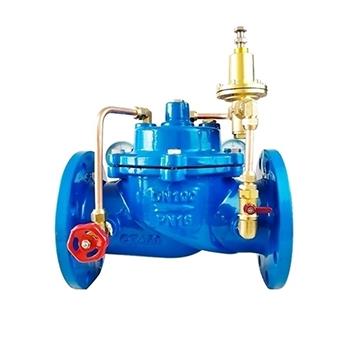How to Select Pressure Relief Valve?
We've all used a pressure cooker, or seen heating, etc. These are our common things, and there will be a pressure relief valve device on these things. So, what approach do we need to take when purchasing? How to choose a pressure relief valve? With these questions in mind, we start today's topic.
When we choose the pressure relief valve model, let's start with the demand. The main purpose of installing the pressure relief valve device is to prevent the internal pressure index of various application equipment from rising under certain circumstances and exceeding the allowable value. The most fundamental purpose of this device is to ensure the safe operation of the corresponding equipment.
Structure
There are two main types of pressure relief valve structures: spring type and lever type.
The spring type means that the sealing between the valve disc and the valve seat depends on the force of the spring. The lever type relies on the force of a lever and a weight. With the need for large capacity, there is another pulse-type pressure relief valve, also known as the pilot pressure relief valve, which is composed of a main pressure relief valve and an auxiliary valve. When the medium pressure in the pipeline exceeds the specified pressure value, the auxiliary valve is opened first, and then the medium enters the main pressure relief valve along the conduit, and the main pressure relief valve is opened to reduce the increased medium pressure.
For the structure of different pressure relief valve models, the basic situation is the same. First of all, we say that the sealing of the pressure relief valve is completely relying on the compression spring to generate force, so that the valve disc can be in close contact with the sealing surface of the valve seat, thereby playing a sealing role. The sealing surfaces of the disc and seat are made of hard alloy surfacing.
The surface of the valve stem is nitrided, which has good anti-scratch and anti-corrosion properties. Crank minor shaft and handle constitute a manual mechanism. The positioning plug is screwed into the side hole of the positioning sleeve after the guide sleeve of the pressure relief valve is adjusted to prevent the positioning sleeve from rotating.
Selection of pressure relief valve
- Determine the nominal pressure of the relief valve. Select the nominal pressure according to the valve material, working temperature, and maximum working pressure.
- Determine the working pressure rating of the relief valve. The working pressure grade is selected according to the design pressure and design temperature of the pressure vessel.
- The working pressure of the pressure relief valve and the working pressure level of the spring have different meanings and should not be confused. Working pressure refers to the static pressure that the pressure relief valve bears during normal operation, which is the same as the working pressure of the protected system or equipment.
- The working pressure level of the spring refers to the working pressure range allowed by a certain spring. Within this pressure range, the opening pressure (the set pressure) of the pressure relief valve can be adjusted by changing the preload compression of the spring. Pressure relief valves with the same nominal pressure can be divided into many different working pressure levels according to the spring design requirements.
Precautions
The pressure relief valve is an important accessory for pressure limiting and pressure relief on special equipment (boilers, pressure vessels, pressure pipelines, etc.) for safety protection. If the pressure relief valve is directly installed on special equipment, its design, manufacture, installation, use, and inspection must meet the requirements of relevant regulations on special equipment. The reliability and performance of its action are directly related to equipment and personal safety. And safety is closely related to energy saving and environmental protection.
Common pressure relief valves are as follows:
1. According to the form of the overall structure and loading structure, it can be divided into three types: hammer lever type pressure relief valve, spring type pressure relief valve, and control type.
2. According to the ratio of the disc opening height to the flow diameter of the valve, it can be divided into micro-opening and full-opening pressure relief valves.
3. According to the gas discharge method of the pressure relief valve, it can be divided into three types: fully enclosed, semi-closed, and open.
The selection of a suitable pressure relief valve should consider the following aspects:
1. The structural form mainly depends on the technological conditions of the equipment and the working medium and characteristics. Generally, spring-type pressure relief valves are often used when the discharge volume of boilers and pressure vessels is not large.
2. If the medium is toxic, flammable, and explosive, a closed pressure relief valve should be selected.
3. Each pressure relief valve has its own working pressure range, and the selection should be made according to actual needs.
4. The discharge volume of the selected pressure relief valve must be greater than the discharge volume of the equipment, so as to ensure that part of the medium is removed and avoid the pressure from continuing to rise.

